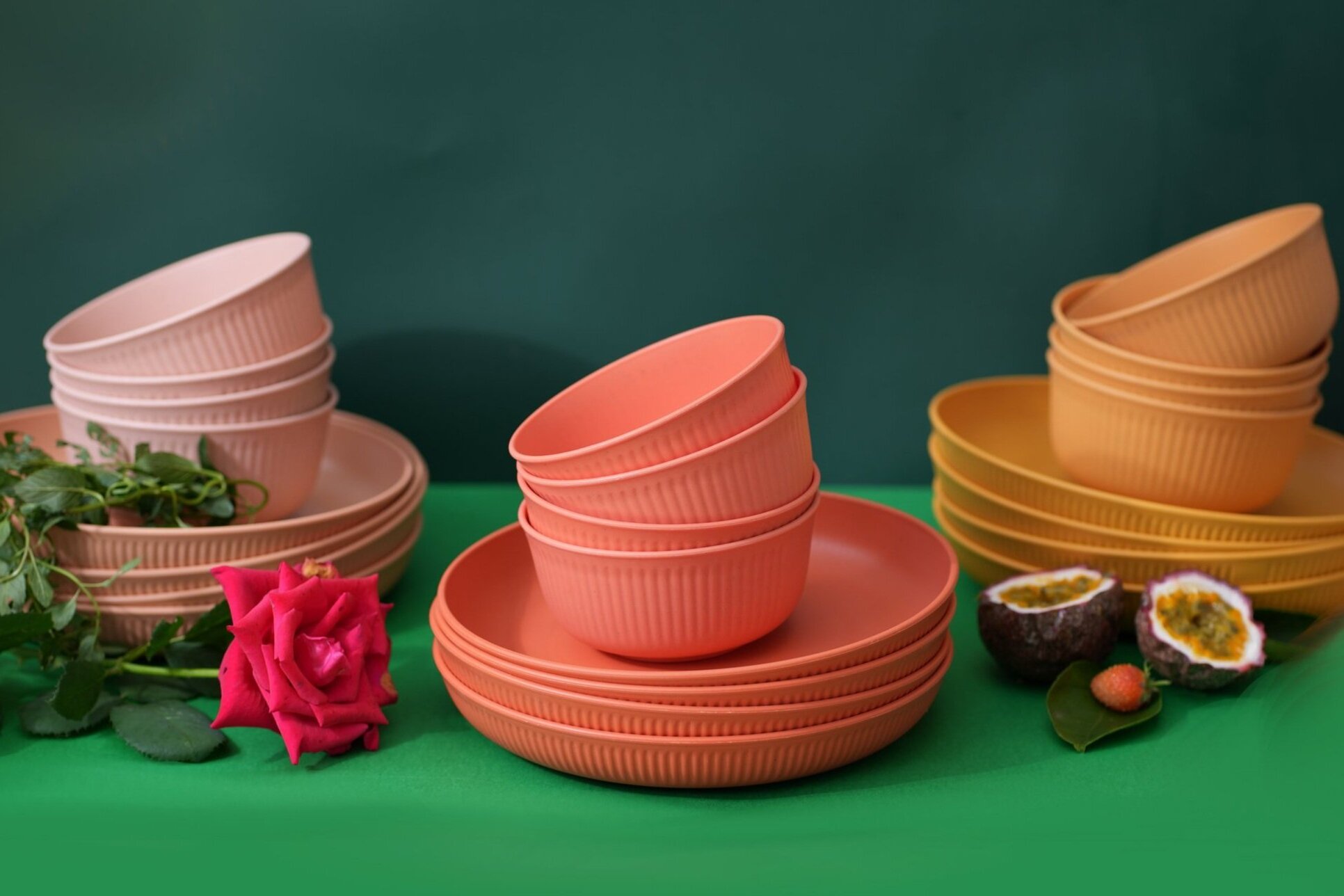
Wheat straw plates are gaining popularity as a sustainable alternative to traditional plastic and paper plates. But what exactly makes them special? Wheat straw is the byproduct of harvesting wheat grains, often discarded or burned. Instead, this material can be transformed into durable, eco-friendly tableware. These plates are biodegradable, meaning they break down naturally without harming the environment. They’re also microwave and freezer safe, making them versatile for everyday use. Plus, they’re lightweight yet sturdy, perfect for picnics or parties. Curious about more benefits and interesting facts? Keep reading to discover 32 fascinating insights about these innovative plates!
Key Takeaways:
- Wheat straw plates are eco-friendly, durable, and microwave safe. They are a healthier and stylish alternative to plastic or paper plates, perfect for picnics, parties, and everyday use.
- By choosing wheat straw plates, you're reducing plastic waste, saving trees, and lowering your carbon footprint. They are cost-effective, customizable, and compostable, making them a smart and stylish choice for a sustainable lifestyle.
What Are Wheat Straw Plates?
Wheat straw plates are eco-friendly alternatives to traditional plastic or paper plates. Made from the byproduct of wheat production, these plates are biodegradable and sustainable. Let's dive into some fascinating facts about these innovative products.
-
Eco-Friendly: Wheat straw plates are made from agricultural waste, reducing the need for plastic.
-
Biodegradable: These plates decompose naturally, leaving no harmful residues.
-
Microwave Safe: You can safely use them in the microwave for heating food.
-
Durable: Despite being eco-friendly, they are sturdy and can handle hot and cold foods.
Benefits of Using Wheat Straw Plates
Switching to wheat straw plates offers numerous benefits, both for you and the environment. Here are some key advantages.
-
Chemical-Free: They are free from harmful chemicals like BPA and phthalates.
-
Lightweight: Easy to carry, making them perfect for picnics and outdoor events.
-
Reusable: Unlike disposable plates, these can be washed and reused multiple times.
-
Cost-Effective: Over time, they can save you money compared to single-use plates.
Environmental Impact
The environmental benefits of wheat straw plates extend beyond just being biodegradable. Here’s how they make a difference.
-
Reduces Plastic Waste: Every plate used means one less plastic plate in a landfill.
-
Saves Trees: Using wheat straw reduces the need for paper plates, saving trees.
-
Lower Carbon Footprint: The production process emits fewer greenhouse gases compared to plastic.
-
Compostable: They can be composted at home, enriching your soil.
Health Benefits
Using wheat straw plates can also have positive effects on your health. Here’s why they are a healthier choice.
-
Non-Toxic: Made from natural materials, they don’t leach harmful substances into your food.
-
Allergen-Free: Safe for people with allergies to certain plastics or chemicals.
-
Odorless: They don’t retain food odors, keeping your meals fresh.
-
Heat Resistant: They don’t release toxins when exposed to high temperatures.
Versatility and Design
Wheat straw plates are not just functional but also versatile and stylish. Here’s what makes them stand out.
-
Variety of Colors: Available in multiple colors to match your style.
-
Modern Design: Sleek and contemporary, they look great on any table.
-
Customizable: Some manufacturers offer custom designs and logos.
-
Stackable: Easy to store, saving you space in your kitchen.
Practical Uses
These plates are suitable for various occasions and settings. Here are some practical uses.
-
Picnics: Perfect for outdoor dining due to their lightweight nature.
-
Parties: Great for parties, reducing the need for disposable plates.
-
Camping: Durable enough for camping trips.
-
Everyday Use: Ideal for daily meals at home.
How They Are Made
Understanding the production process can give you more appreciation for these plates. Here’s a brief overview.
-
Harvesting: Wheat straw is collected after the grain is harvested.
-
Cleaning: The straw is cleaned to remove impurities.
-
Pulping: It’s then pulped to create a moldable material.
-
Molding: The pulp is molded into plates using heat and pressure.
Future of Wheat Straw Plates
The future looks promising for wheat straw plates as more people seek sustainable options. Here’s what to expect.
-
Increased Adoption: More households and businesses are switching to eco-friendly products.
-
Innovation: Ongoing research is making these plates even more durable and versatile.
-
Government Support: Some governments are encouraging the use of biodegradable products.
-
Global Impact: As their popularity grows, the positive environmental impact will be felt worldwide.
Wheat Straw Plates: A Smart Choice
Wheat straw plates are a game-changer for eco-friendly dining. Made from agricultural byproducts, these plates reduce waste and promote sustainability. They’re sturdy, microwave-safe, and biodegradable, making them perfect for everyday use or special occasions. Plus, they’re free from harmful chemicals, ensuring safety for you and your family.
Switching to wheat straw plates helps cut down on plastic pollution and supports a greener planet. They’re not just good for the environment but also convenient and stylish. With their natural look and feel, they add a touch of elegance to any meal.
Choosing wheat straw plates means making a positive impact on the world while enjoying practical benefits. So next time you’re shopping for tableware, consider this eco-friendly option. It’s a small change that makes a big difference.
Frequently Asked Questions
Was this page helpful?
Our commitment to delivering trustworthy and engaging content is at the heart of what we do. Each fact on our site is contributed by real users like you, bringing a wealth of diverse insights and information. To ensure the highest standards of accuracy and reliability, our dedicated editors meticulously review each submission. This process guarantees that the facts we share are not only fascinating but also credible. Trust in our commitment to quality and authenticity as you explore and learn with us.
